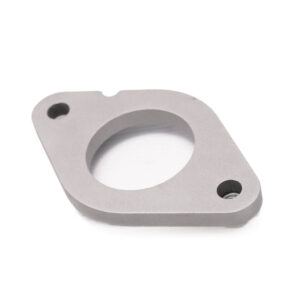Fine Blanking
Fine blanking is a specialized form of blanking where there is no fracture zone when shearing. This is achieved by compressing the whole part and then an upper and lower punch extract the blank. This allows the process to hold very tight tolerances, and perhaps eliminate secondary operations.









































































What We Offer
- Cost: Competitive costing is our number 1 priority.
- Quality: We are ISO 9001:2015 certified.
- Lead Time: We understand that on-time delivery is crucial to our customers’ success.
- Technology: By re-investing in our plant and machinery we ensure our capabilities remain globally competitive.
- Industries we supply to: Automotive, mechanical engineering, mining, electrical, defence, medical, aviation, etc.

Materials that can be fine blanked include aluminium, brass, copper, carbon, aloy and stainless steel.
Fine blanking presses are similar to other metal stamping presses, but they have a few critical additional parts. A typical compound fine blanking press includes a hardened die punch (male), the hardened blanking die (female), and a guide plate of similar shape/size to the blanking die. The guide plate is the first applied to the material, impinging the material with a sharp protrusion or stinger around the perimeter of the die opening. Next a counter pressure is applied opposite the punch, and finally the die punch forces the material through the die opening. Since the guide plate holds the material so tightly, and since the counter pressure is applied, the material is cut in a manner more like extrusion than typical punching.
Mechanical properties of the cut benefit similarly with a hardened layer at the cut edge of the part. Because the material is so tightly held and controlled in this setup, part flatness remains very true, distortion is nearly eliminated, and edge burr is minimal.
Clearances between the die and punch are generally around 1% of the cut material thickness, which typically varies between 0.5–13 mm (0.020–0.51 in). Currently parts as thick as 19 mm (0.75 in) can be cut using fine blanking. Tolerances between ±0.0003–0.002 in (0.0076–0.051 mm) are possible based on material thickness & tensile strength,
With standard compound fine blanking processes, multiple parts can often be completed in a single operation. Parts can be pierced, partially pierced, offset (up to 75°), embossed, or coined, often in a single operation. Some combinations may require progressive fine blanking operations, in which multiple operations are performed at the same pressing station.
Fine Blanking (Pty) Limited has several fine blanking presses ranging from 63 Ton to 400 Ton.
Advantages
- Excellent dimensional control, accuracy, and repeatability through a production run
- Excellent part flatness is retained
- Straight, superior finished edges to other metal stamping processes
- Smaller holes possible relative to thickness of material
- Little need to machine details
- Multiple features can be added simultaneously in 1 operation
- More economical for large production runs than traditional operations when additional machining cost and time are factored in (1000–20000 parts minimum, depending on secondary machining operations)
